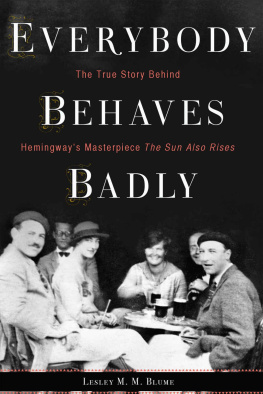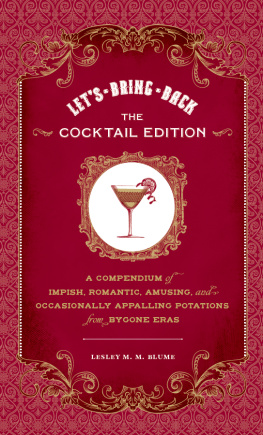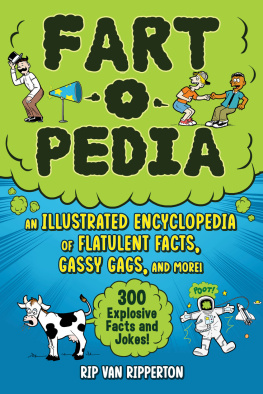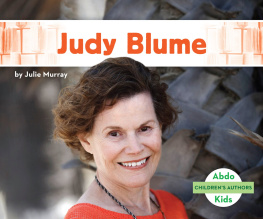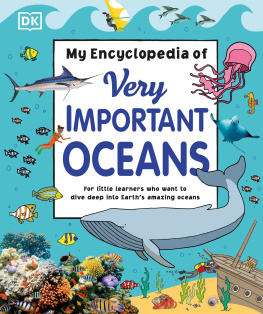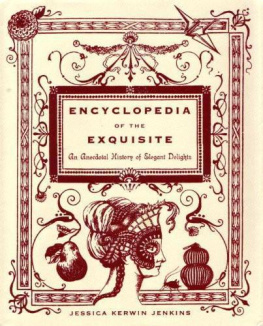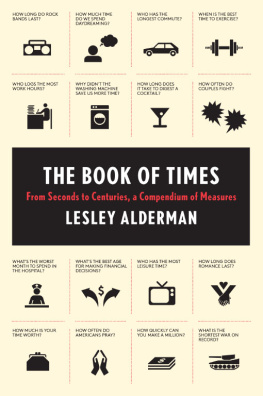
DEDICATED TO MY HEROINES:

Marlene, Diana, Isabella, AND Anya,
WHOSE BOLDNESS, APPETITES, AND STYLE
HAVE MADE THEM TIMELESS SOURCES OF INSPIRATION.
Copyright 2010 by Lesley M. M. Blume. All rights reserved. No part of this book may be reproduced in any form without the prior written permission of the publisher.
ISBN: 978-1-4521-0350-1
Library of Congress Cataloging-in-Publication Data is available under ISBN: 978-0-8118-7413-7
DESIGNED BY TRACY SUNRIZE JOHNSON
Chronicle Books LLC
680 Second Street
San Francisco, CA 94107
WWW.CHRONICLEBOOKS.COM

INTRODUCTION
One night, in a bygone era, the Oscar de la Rentas gave a dinner party. And at that party, the following exchange is said to have taken place: Swifty Lazar, famed talent agent, turned to legendary fashion editor Diana Vreeland and told her, The problem with you, dollface, is that your whole world is nostalgic.
Vreelands response: Listen, Swifty, we all have our own ways of making a living, so shut up!
And then she punched him right in the nose.

YOU MIGHT THINK that this was a rather extreme reaction, but if you ask me, it was perfectly justified. For I, like Diana Vreeland, am an incurable nostalgist, and life is difficult for nostalgists these days. Status updates have replaced gossiping over cocktails; Starbucks runs have supplanted high tea; synthetic Spanx have taken over where silk corsets left off.
So you can see why nostalgists occasionally have to get violent when it comes to preserving our sepia-drenched outlooks: Were absolutely drowning in Newest, Latest, Faster, and Disposable.
Lets be realistic: No one is immune to the allure of novelty. I enjoy my iPod as much as the next person, and I do write for an online publicationseveral, in factwhich is an undeniably contemporary occupation. Even Mrs. Vreelandas she was always calledadmitted to the advantages of living in the age of penicillin.
Yet the benefits of todays ber-connectedness come at a price. Modern living is increasingly about convenience, often leaving behind the pleasures of ornamentation and ceremony. As many of us are discovering, efficiency and quality of life are not necessarily synonymous. New products and diversions whiz through our lives at lightning speed; as we discard older objects and occupations to make room for them, we often dont fully realize what weve given up until its too late (like the concept of privacy, for examplealong with privacys cousins, mystery and elegance).
An encyclopedia of nostalgia, Lets Bring Back celebrates hundreds of discarded or forgotten objects, pastimes, curiosities, recipes, words, architectural works, and personassome visionary, some deliciously notoriousfrom bygone eras that should be reintroduced today. The entries are by turns humorous, practical, frivolous, solemn, and whimsical; several have been included solely in the spirit of sheer absurdity. The material draws on a vast array of eras, from ancient times to the Deco-saturated 1920s to the elaborately coiffed 1960s. Not all of the objects mentioned here are extinct, per se, but play a reduced role in our lives after falling out of fashions favor.
While most of these entries are composed of my own personal appreciations, I have also invited luminaries from various fields to cite something that they believe should be brought back; these include designer Kate Spade, filmmakers James L. Brooks and Nora Ephron, media icons Arianna Huffington and Ted Koppel, interior decorator Jonathan Adler, chef Daniel Boulud, and many other celebrated and accomplished cultural figures. Lets Bring Back even includes whispers from Camelot in the form of advice from Letitia Baldrige, Jacqueline Kennedys White House social secretary and one of Americas foremost experts on etiquette.
Before you get the wrong idea, Lets Bring Back is not about stopping the clock or extolling the virtues of simpler times. Times have never been simple. Nor is Lets Bring Back about nostalgia for nostalgias sake alone. Looking back in this way helps us to become intelligently forward-looking as well. It makes us preservation-minded, astute observers of contemporary culture and helps us evaluate what traditions, heirlooms, and elements of our own lifestyles and households we want to pass on to the next generation. It makes us consider why we value an object or ritual one day and forsake it the next.
At heart, Lets Bring Back is a simple appreciation, honoring the history of artful living and artfully lived lives. Each of us hopes to leave a legacy of some sort when we die; yet all legaciesno matter how grand or modestrequire an appreciative audience. Even the most astounding legacies can get lost in the dust kicked up by progress if they are not documented and discussed in retrospect.
So lets rediscover some of the things that entertained, awed, scandalized, beautified, satiated, and fascinated people in eras past. From sealing wax and quill pens to the Orient Express, from dumbwaiters to quizzing glasses to the Ziegfeld Follies, there are many delights to be dusted off and enjoyed once again.
A
ACQUAINTANCE Today the word friend is used rather carelessly; it should be reserved for the most hallowed of relationships. One rarely hears the word acquaintance anymorea polite, cunning catchall term that strikes the perfect balance between affiliation and distance.
AESOPS FABLES Although usually considered childrens tales, Aesops fables contain many savvy insights into human nature for adults; they also gave rise to many sayings we still use today. Here is a short list of oft-used Aesop-inspired idioms and the fables from which they originated:
SOUR GRAPES. From The Fox and the Grapes , in which a fox spots a bunch of juicy grapes on a vine but cant leap high enough to reach them. He skulks away, telling himself that the grapes were sure to be sour anyway. Any guy who hasnt gotten the girl probably finds this to be a familiar notion.

KILLING THE GOLDEN GOOSE. From The Goose That Laid the Golden Eggs , in which a couple owns a rather lucratively talented goose. Tired of receiving only one golden egg a day, these gluttons slay the bird and open it up, thinking that they can get the whole stash at once. Instead of gold, they find stinky old innards, like any other goose. The idiom is a metaphor for a short-sighted action that may seem to bring an immediate reward but will more likely have unsavory long-term consequences.
THE LIONS SHARE. A term from an eponymous fable in which a lion, fox, jackal, and wolf go deer hunting. They kill a stag and divide it into four parts. The lion claims the first quarter because hes the so-called king of the beasts. Then, as the other animals are about to tuck into their deer hocks, the lion takes the second quarter as an arbiters fee of sorts. Next, he adds the third quarter to his bloody pile to compensate for his part in the chase, and the other animals are left to fight over the last measly bit (although in some versions the lion takes all four quarters). Therefore, the lions share means the largest portion of a whole.
Next page

